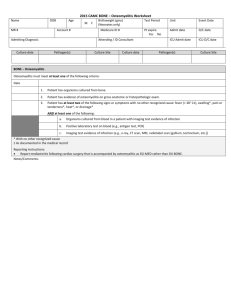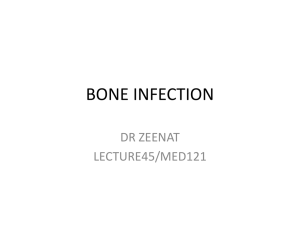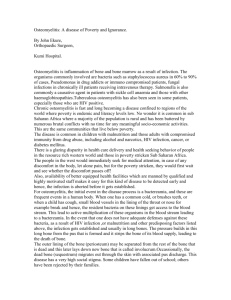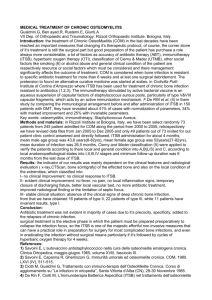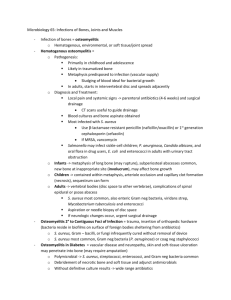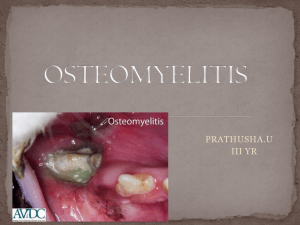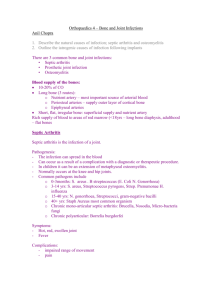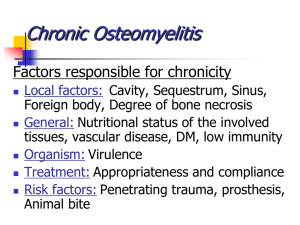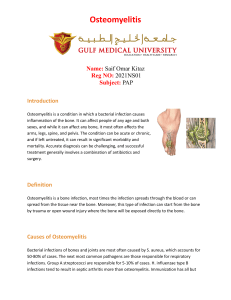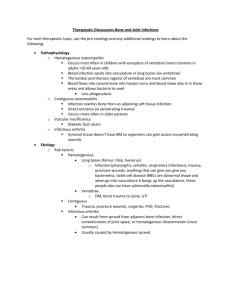Osteomyelitis
advertisement
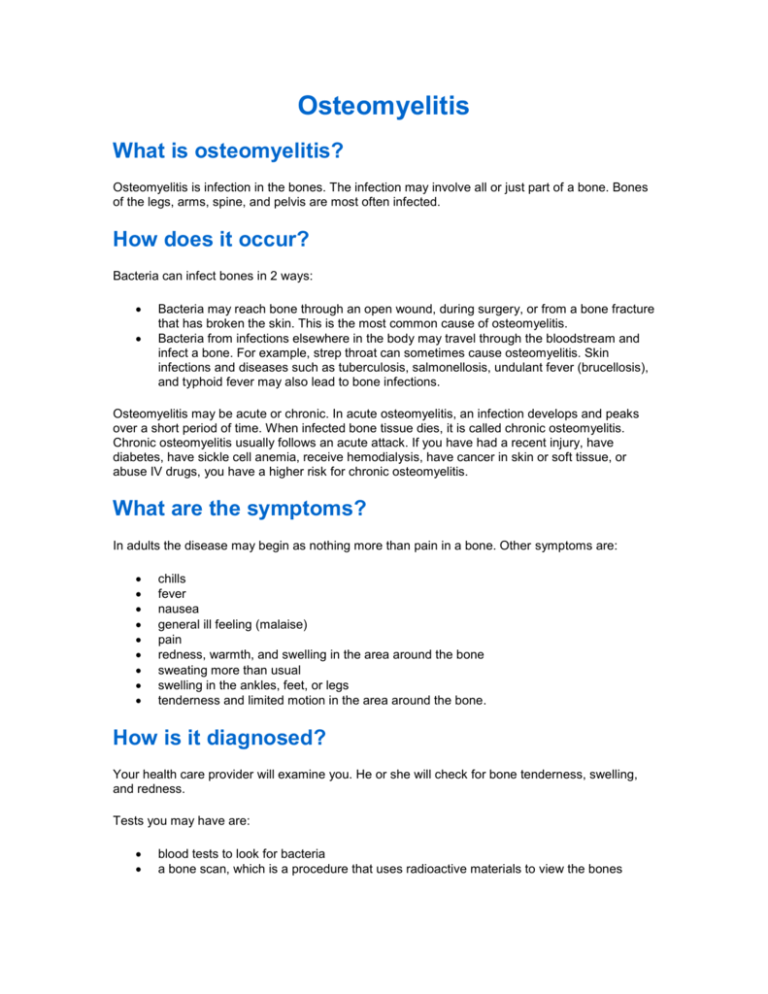
Osteomyelitis What is osteomyelitis? Osteomyelitis is infection in the bones. The infection may involve all or just part of a bone. Bones of the legs, arms, spine, and pelvis are most often infected. How does it occur? Bacteria can infect bones in 2 ways: Bacteria may reach bone through an open wound, during surgery, or from a bone fracture that has broken the skin. This is the most common cause of osteomyelitis. Bacteria from infections elsewhere in the body may travel through the bloodstream and infect a bone. For example, strep throat can sometimes cause osteomyelitis. Skin infections and diseases such as tuberculosis, salmonellosis, undulant fever (brucellosis), and typhoid fever may also lead to bone infections. Osteomyelitis may be acute or chronic. In acute osteomyelitis, an infection develops and peaks over a short period of time. When infected bone tissue dies, it is called chronic osteomyelitis. Chronic osteomyelitis usually follows an acute attack. If you have had a recent injury, have diabetes, have sickle cell anemia, receive hemodialysis, have cancer in skin or soft tissue, or abuse IV drugs, you have a higher risk for chronic osteomyelitis. What are the symptoms? In adults the disease may begin as nothing more than pain in a bone. Other symptoms are: chills fever nausea general ill feeling (malaise) pain redness, warmth, and swelling in the area around the bone sweating more than usual swelling in the ankles, feet, or legs tenderness and limited motion in the area around the bone. How is it diagnosed? Your health care provider will examine you. He or she will check for bone tenderness, swelling, and redness. Tests you may have are: blood tests to look for bacteria a bone scan, which is a procedure that uses radioactive materials to view the bones x-rays or a CT scan to look for an abscess or other signs of bacterial infection (signs of bone infection show up on x-rays about 10 to 14 days after symptoms first appear). Your health care provider may surgically remove and examine (biopsy) a sample of bone. The sample can be tested for bacteria and to see which antibiotics will work best. How is it treated? Antibiotics given by shots into your veins are usually successful in treating osteomyelitis. You may need antibiotic treatment for several weeks or months. You may need surgery to remove sections of bone that are slow healing, or to drain abscesses. Damaged sections of bone may grow back normally after the infection is under control. If you have a chronic infection, a surgeon may remove the dead bone tissue. You may also need to take antibiotics periodically for the rest of your life. How long will the effects last? With prompt treatment, only about 5% of cases of acute osteomyelitis become chronic infections. Chronic infections can cause general weakness, weight loss, anemia, kidney disease, and other disorders. Severe chronic osteomyelitis may require amputation. How can I take care of myself? It is important to have regular checkups and to follow your health care provider's advice about how to take care of yourself. Check with your health care provider before taking other medicines, including nonprescription products or other forms of treatment. Continue to eat a balanced diet and get regular exercise. If you have a sore throat or fever, call your health care provider for advice. You may need immediate treatment. How can I help prevent osteomyelitis? See your health care provider promptly if you have signs of an infection anywhere in the body. Take care of any wounds or injuries right away.
